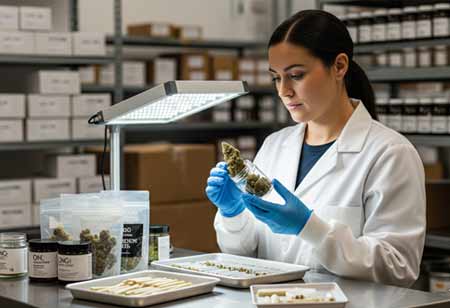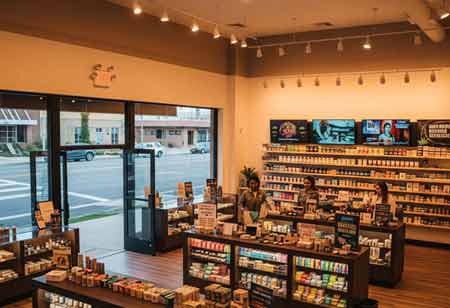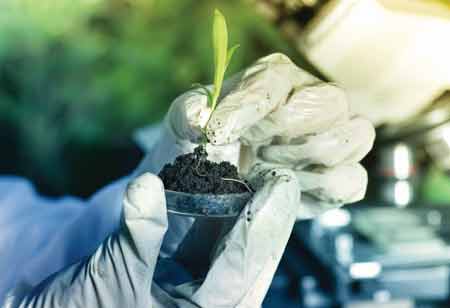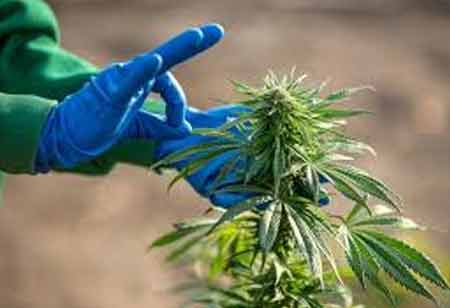Thank you for Subscribing to Cannabis Business Insights Weekly Brief
Navigating the Shifting Landscape of Cannabis Product Design
The cannabis packaging industry is evolving with regulatory demands, consumer preferences, and material innovations, focusing on sustainability, safety, and brand identity in a competitive market.
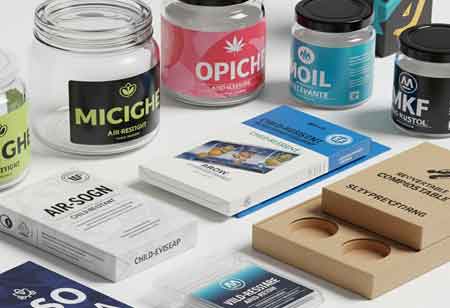
By
Cannabis Business Insights | Wednesday, July 16, 2025
Stay ahead of the industry with exclusive feature stories on the top companies, expert insights and the latest news delivered straight to your inbox. Subscribe today.
The cannabis packaging industry stands at an intersection of evolving consumer preferences, stringent regulatory frameworks, and rapid innovation in material science and design. As global acceptance of cannabis products, both for medicinal and recreational purposes, continues its upward trajectory, the demand for sophisticated and compliant packaging solutions is experiencing exponential growth. This sector is no longer merely about containment; it has transformed into a critical component of brand identity, consumer safety, and environmental stewardship.
Within this burgeoning market, both rigid and flexible packaging formats are witnessing considerable uptake. Rigid packaging, encompassing glass jars and durable plastic containers, currently holds a larger market share, favored for its perceived durability, premium aesthetic, and ease of integrating child-resistant features. These formats lend themselves well to products like cannabis flower and some concentrates, enhancing shelf presence and product protection. Conversely, flexible packaging, including pouches and bags, is experiencing a faster growth rate. This rise is attributed to its cost-effectiveness, lightweight nature, reduced material waste, and compatibility with high-speed automated production lines, making it ideal for edibles, pre-rolls, and other high-volume products. The shift towards flexible solutions also aligns with broader industry goals of minimizing logistical footprints and material consumption.
Material Innovations and Sustainability Imperatives
The selection of packaging materials is a pivotal aspect of the cannabis packaging industry, influenced by a blend of regulatory mandates, cost considerations, and a growing emphasis on environmental responsibility. Plastics currently represent a significant portion of the market, offering versatility, barrier properties, and established supply chains. However, there is a discernible trend towards more sustainable alternatives.
Biopolymers, derived from renewable sources like hemp-based resins and corn-starch PLA, are gaining considerable traction. These materials offer the promise of biodegradability and reduced environmental impact, resonating strongly with an increasingly eco-conscious consumer base that values natural, plant-based lifestyles. Research into novel bio-based composites, such as chitosan-hemp blends, further underscores the industry's commitment to developing advanced, environmentally friendly structural carriers that can potentially displace traditional fossil-fuel polymers.
Beyond biopolymers, the industry is also exploring and adopting recycled content, including post-consumer recycled (PCR) plastics and ocean-bound plastics. Paper and paperboard solutions are being innovated to include crush-proof designs and hidden locking mechanisms, addressing earlier structural limitations while maintaining their renewable and recyclable attributes. Metal tins, particularly for concentrates, provide excellent light protection and contribute to a premium perception. The overarching goal across material innovation is to balance regulatory compliance, product integrity, and environmental sustainability.
Regulatory Influence on Design and Functionality
The regulatory landscape profoundly shapes cannabis packaging. Governments worldwide, and particularly state-level authorities in markets like the United States, impose stringent requirements aimed at public safety, preventing accidental consumption, and deterring appeal to minors. These regulations often mandate child-resistant features, tamper-evident seals, and opaque packaging, especially for edible products, to reduce their allure to children.
Labeling requirements are equally comprehensive, demanding precise and accurate information regarding product name, net weight, cannabinoid content (e.g., THC, CBD percentages), usage instructions, warnings, and manufacturing/expiration dates. Some jurisdictions even prescribe specific universal symbols to indicate cannabis content or impose restrictions on design elements like cartoon characters or vibrant imagery that could attract younger demographics. The need for packaging to communicate vital information while adhering to often complex and varied state-specific rules drives innovation in printing technologies and label design, allowing for variable data printing and track-and-trace capabilities like QR codes and barcodes.
The Evolving Consumer Experience and Brand Differentiation
Packaging in the cannabis industry transcends its functional role; it is an integral part of the consumer experience and a powerful tool for brand differentiation in a competitive market. As the industry matures, brands are increasingly recognizing the importance of packaging in conveying product quality, values, and brand narrative. This has led to a focus on aesthetic appeal, tactile design, and convenience features.
Resealable closures, portion control mechanisms, and easy-open designs enhance the user experience. The unboxing experience has become a significant consideration, with brands investing in packaging that creates a memorable and engaging interaction. The rising demand for premium cannabis products has spurred the development of packaging that reflects a high-end feel, often incorporating sophisticated finishes and minimalist designs. The ability of packaging to be collectible or repurposed is also gaining traction, fostering deeper consumer loyalty and extending brand visibility beyond the initial purchase.
The cannabis packaging product industry is poised for continued innovation and growth. The ongoing wave of legalization, coupled with increasing consumer acceptance and product diversification, will fuel demand for a wide array of packaging solutions. Future trends are likely to intensify the focus on circular economy principles, leading to greater adoption of reusable packaging systems and advanced recycling technologies. Smart packaging, incorporating features like NFC or RFID for enhanced traceability and consumer engagement, is expected to become more prevalent. As manufacturing processes become more automated, flexible packaging will continue to gain ground, offering efficiencies and cost benefits. Ultimately, the industry's trajectory will be defined by its ability to navigate complex regulatory environments while continuously innovating to deliver packaging that is safe, sustainable, aesthetically appealing, and aligned with the evolving needs and values of the global cannabis consumer.


